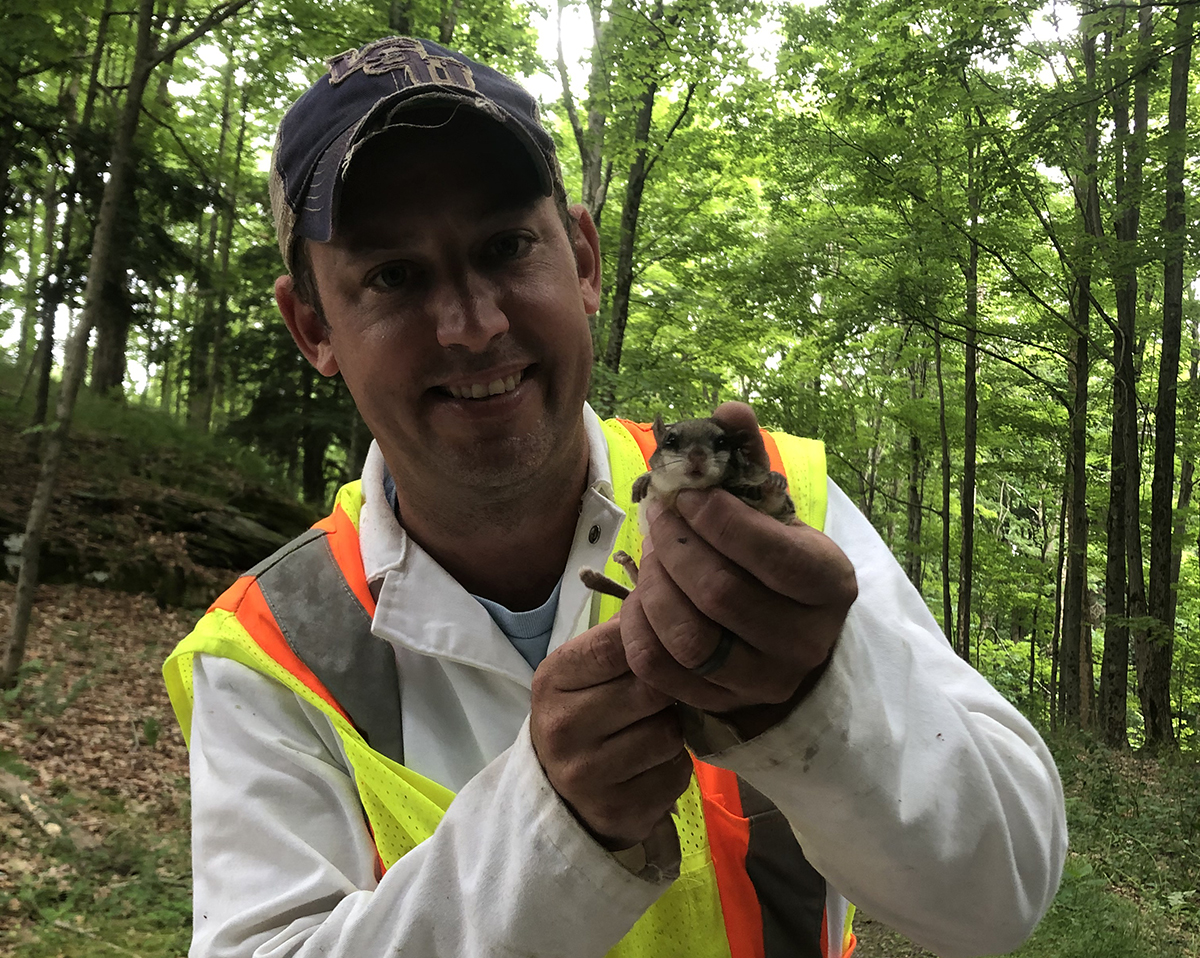Recent Headlines

Dr. Brian Leydet, assistant professor of epidemiology and disease ecology, is studying the role of small mammals in the spread of tick-borne disease
Dr. Leydet Explores Connection Between Environment and Disease
Dr. Brian Leydet sees a connection between the environment and disease that may be mitigated with conservation measures that include humans in the equation.
Leydet is researching that connection on the Overlook Farm, a 400-acre property in Waverly, Pennsylvania owned by Mort and Sue Fuller who are conserving the land in a natural way.
Leydet's work employs Lyme disease as a model of a public health concern that has a significant environmental component, he said.
For Leydet, the location provides the perfect spot for his research due to the number of ticks on the property. "If you're going to think about long-term planning and conservation, then you should probably think about what that's going to do to tick populations and your risk for disease," said Leydet.
Specifically, Leydet is concerned about how modifications to habitat trickle down to the tick population and in turn, Lyme disease in humans.
"If you do something such as add a species of tree that produces a food source for mice, then you could expect more ticks and more disease," he said.
Leydet and his team are working in two different forest types that are separated by about 30 meters, or 90 feet.
One forest is a northern hardwood forest with broadleaf tree species and an understory that's easy to walk through. Separated by a meadow lies Leydet's other study site, an ash forest decimated by the Emerald Ash Borer. "Here there are no leaves, invasive plant species have taken over, and the understory is just horrendous," said Leydet.
"What we've realized through surveillance in the past few years," said Leydet, "is that there is a very different risk of disease in those two forests." Lyme disease risk in the ash forest is two times greater than in the hardwood forest.
Leydet and his team are characterizing the plant communities, and looking at the animal communities to understand the differences that may affect tick-borne disease.
To do this, they are collecting ticks off small mammals, and analyzing genetic differences of the bacteria in the ticks and small mammals to understand how disease agents are being transferred in each forest type.
"Once we understand that, we can develop practices that trickle down to the small mammal community through management plans," said Leydet. "Maybe you replace certain types of trees that affect the understory and change the small mammal community, or predation that would have a subsequent effect on disease risks in those habitats," said Leydet.
Leydet hopes people will become more concerned about finding the balance between conservation and human health.
"You can work together to increase human health as well as help the environment, knowing that it's not going to be a win-win all the time," he said. "It's going to be an agreement between humans and their surrounding environment."
Leydet's research could help in the prevention of future pandemics. Several viruses, such as Ebola and SARS-Cov-2, that jumped from animals to humans may have their roots in environmental degradation. Perhaps food insecurity is at the root of the problem, noted Leydet, and where food insecurity is driven by environmental degradation, it can lead people to non-traditional food sources.
"I think it's this battle between medical and ecological sciences," said Leydet, "and I try to bring those together as much as I can."
Funding from the Fuller's Overlook Estate Foundation allows Leydet to gather preliminary data that will be needed for NSF and NIH grant proposals.
"That pilot data is essential. You can't simply go with a good idea and no data. You have to have the data."